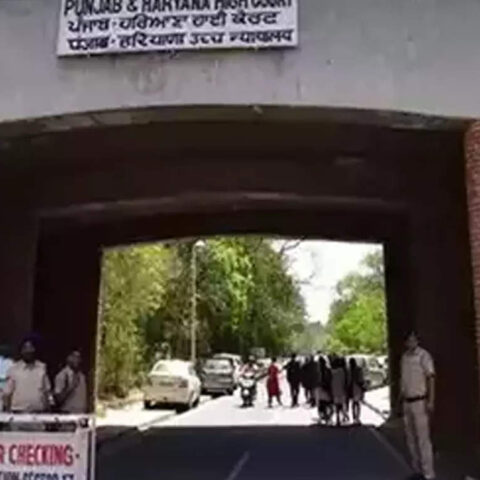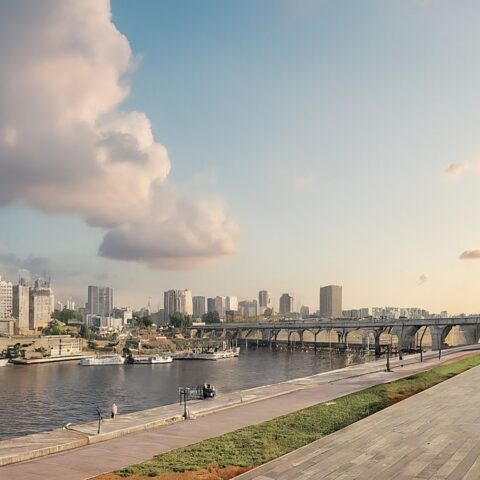When Paris was selected to host the Summer 2024 Olympic and Paralympic Games, one of the selling points of the city’s proposal was that it would primarily rely on existing or temporary structures for sporting events, such as the Grand Palais for fencing and tae kwon do, the Stade Roland-Garros for tennis and boxing, and the Stade de France, the country’s national stadium, for athletics, rugby sevens, and closing ceremonies. Beyond an open-air climbing facility, only one new permanent sports venue has been constructed specifically for the Games: the Aquatics Centre, an eco-responsible natatorium in the suburb of Saint-Denis that will host diving, water polo, and artistic-swimming competitions.
Codesigned by the Amsterdam-based firm VenhoevenCS and the French architects Ateliers 2/3/4/, the Aquatics Centre is a handsome timber structure with a dramatic swooping roof, set on a 30-acre former industrial site across the A1 highway from the Stade de France. Linking the two stadiums is a new pedestrian bridge, also of the firms’ design. Their work now forms the centerpiece for La Plaine Saulnier, an urban district that will be built in the coming years by the Grand Paris Metropolis, the inter-municipality that connects the city and its surrounding suburbs.
Inside the Aquatics Centre, there is a 50-meter Olympic-size pool, a 25-meter short-course pool, a recreational pool, and a diving pool, all conceived to “consume less, consume better,” the project leaders Cécilia Gross of VenhoevenCS and Laure Mériaud of Ateliers 2/3/4/ state. Their eco-conscious approach was key to winning the commission. Organizers of the Paris Games have set an ambitious greenhouse gas emissions target that is half of what the 2012 Olympics in London generated.
To do their part, the design team limited traditional structural materials, such as steel, the production of which is highly polluting, in favor of more eco-friendly spruce and Douglas fir, from Finland and France. (Researchers have found that wood stores carbon even after it’s been harvested.) For the Aquatics Centre, the roof also provides optimal acoustics, Gross explained during a tour of the site in March. And the beams can be repurposed if the building is ever razed. “We asked ourselves, ‘What is the best choice for what we have to achieve?’ ” Gross said. Their answer: “Finding the right balance.”







